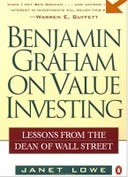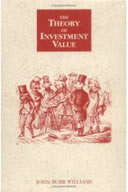Over the years, Warren Buffett has recommended many books in a variety of venues about a variety of subjects. Continuing our ongoing series of books recommended by Buffett (our last entry in this series was on Buffett’s political book recommendations) here we highlight ten books that Buffett has recommended on investing.
 Take on the Street: What Wall Street and Corporate America Don’t Want You to Know. What you can do to fight back Take on the Street: What Wall Street and Corporate America Don’t Want You to Know. What you can do to fight backby Arthur Levitt
Levitt, the Securities and Exchange Commission’s longest-serving chairman, supervised stock markets during the late 1990s dot-com boom. As working Americans poured billions into stocks and mutual funds, corporate America devised increasingly opaque strategies for hoarding most of the proceeds. Levitt reveals their tactics in plain language, then spells out how to intelligently invest in mutual funds and the stock market. His advice is aimed squarely at small, individual investors, as he explains how to look for clues of malfeasance in annual reports, understand press releases and draw more from reliable sources. |
 The Little Book of Common Sense Investing: The Only Way to Guarantee Your Fair Share of Stock Market Returns The Little Book of Common Sense Investing: The Only Way to Guarantee Your Fair Share of Stock Market Returnsby John C. Bogle
Filled with in-depth insights and practical advice, The Little Book of Common Sense Investing will show you how to incorporate this proven investment strategy into your portfolio. It will also change the very way you think about investing. Successful investing is not easy. (It requires discipline and patience.) But it is simple. For it’s all about common sense. |
 Speculative Contagion: An Antidote for Speculative Epidemics Speculative Contagion: An Antidote for Speculative Epidemics
by Frank Martin
Speculative Contagion is an insider’s riveting real-time and real-money account of the inflating Bubble, accented with the genuine suspense to be found only in real-life drama. The epidemic of tech-driven lunacy gradually affected more and more feverish investors all too prone to be infected by the insidious absurdity of the times. In the midst of it all, Frank Martin found sanctuary in the treasure trove of history. |
 Benjamin Graham on Value Investing: Lessons from the Dean of Wall Street Benjamin Graham on Value Investing: Lessons from the Dean of Wall Street
by Janet Lowe
In this book, Janet Lowe presents a brief but interesting biography of value investor Benjamin Graham. The book also provides a nice overview of the history and theories behind modern value investing. |
 The Theory of Investment Value The Theory of Investment Valueby John Burr Williams
Though the book was first printed in 1938, it is still the most authoritative work on how to value financial assets. As Peter Bernstein has commented: “Williams combined original theoretical concepts with enlightening and entertaining commentary based on his own experiences in the rough-and-tumble world of investment.” Williams’ discovery was to project an estimate that offers intrinsic value and it is called the ‘Dividend Discount Model’ which is still used today by professional investors on the institutional side of markets. |
 Where Are the Customers’ Yachts? or A Good Hard Look at Wall Street Where Are the Customers’ Yachts? or A Good Hard Look at Wall Streetby Fred Schwed, Jr
Humorous and entertaining, this book exposes the folly and hypocrisy of Wall Street. The title refers to a story about a visitor to New York who admired the yachts of the bankers and brokers. Naively, he asked where all the customers’ yachts were? Of course, none of the customers could afford yachts, even though they dutifully followed the advice of their bankers and brokers. Full of wise contrarian advice and offering a true look at the world of investing, in which brokers get rich while their customers go broke, this book continues to open the eyes of investors to the reality of Wall Street. |
 The Intelligent Investor: A Book of Practical Counsel The Intelligent Investor: A Book of Practical Counsel by Benjamin Graham
Since it was first published in 1949, Graham’s investment guide has sold over a million copies and has been praised by such luminaries as Warren E. Buffet as “the best book on investing ever written.” The hallmark of Graham’s philosophy is not profit maximization but loss minimization. In this respect, The Intelligent Investor is a book for true investors, not speculators or day traders. He provides, “in a form suitable for the laymen, guidance in adoption and execution of an investment policy.” Where the speculator follows market trends, the investor uses discipline, research, and his analytical ability to make unpopular but sound investments in bargains relative to current asset value. |
 Paths to wealth through common stocks Paths to wealth through common stocksby Philip Fisher
Paths to Wealth through Common Stocks contains one original concept after another, each designed to greatly improve the results of those who self-manage their investments — while helping those who rely on professional investment advice select the right advisor for their needs. In this book Fisher analyzes how worthwhile profits have been and will continue to be made through common stock ownership, and revealing why his method can increase profits while reducing risk. Many of the ideas found here may depart from conventional investment wisdom, but the impressive results produced by these concepts — which are still relevant in today’s market environment — will quickly remind you why Philip Fisher is considered one of the greatest investment minds of our time. |
 Bull: A History of the Boom and Bust Bull: A History of the Boom and Bustby Maggie Mahar
Citing studies by esteemed economists John Kenneth Galbraith and Charles Kindleberger, Mahar reminds readers that self-blinding euphoria is a regular feature of every bull market. In vivid detail, she documents the trends and outsized personalities that fueled this particular bull market, including the surge of leveraged buyouts of 1984-1987, the mania for junk bonds, falling short-term interest rates, the rush of individual investors into 401(k) retirement plans, the power (and appetites) of mutual funds and the media frenzy that lent an unlikely allure to quarterly corporate earnings reports. The book serves as a reminder that investors should employ skepticism towards information coming out of corporate management. |
 Security Analysis: Principles and Technique Security Analysis: Principles and Techniqueby Ben Graham and Dave Dodd
Benjamin Graham’s revolutionary theories have influenced and inspired investors for nearly 70 years. First published in 1934, his Security Analysis is still considered to be the value investing bible for investors of every ilk. Yet, it is the second edition of that book, published in 1940 and long since out of print, that many experts–including Graham protégé Warren Buffet–consider to be the definitive edition. |
 Common Stocks and Uncommon Profits Common Stocks and Uncommon Profitsby Philip A. Fisher
Regarded as one of the pioneers of modern investment theory, Philip A. Fisher’s investment principles are studied and used by contemporary finance professionals including Warren Buffett. Fisher was the first to consider a stock’s worth in terms of potential growth instead of just price trends and absolute value. His principles espouse identifying long-term growth stocks and their emerging value as opposed to choosing short-term trades for initial profit. First published in 1958, this investment classic is considered a must-read as the foundation for many of today’s popular investment beliefs. |